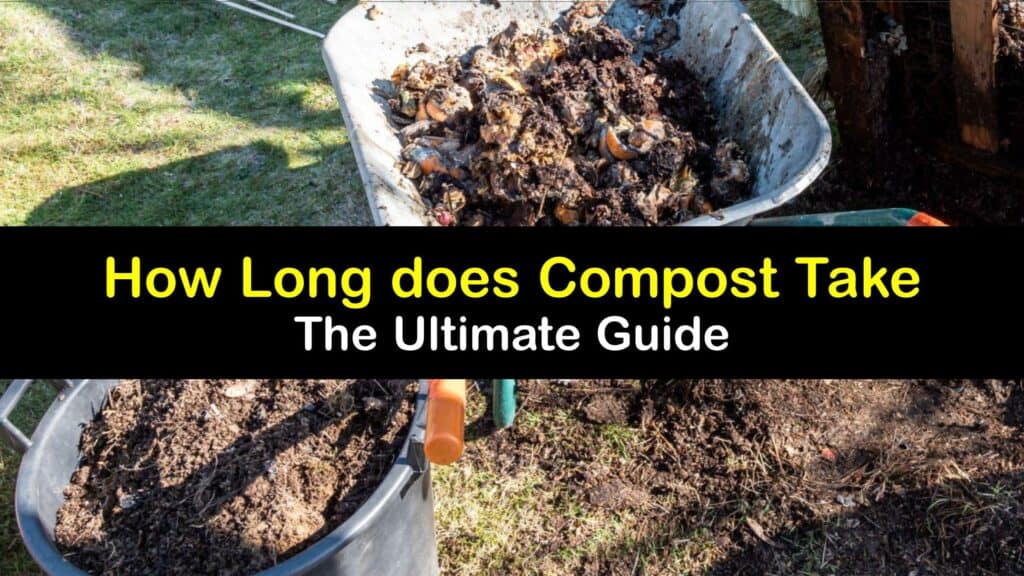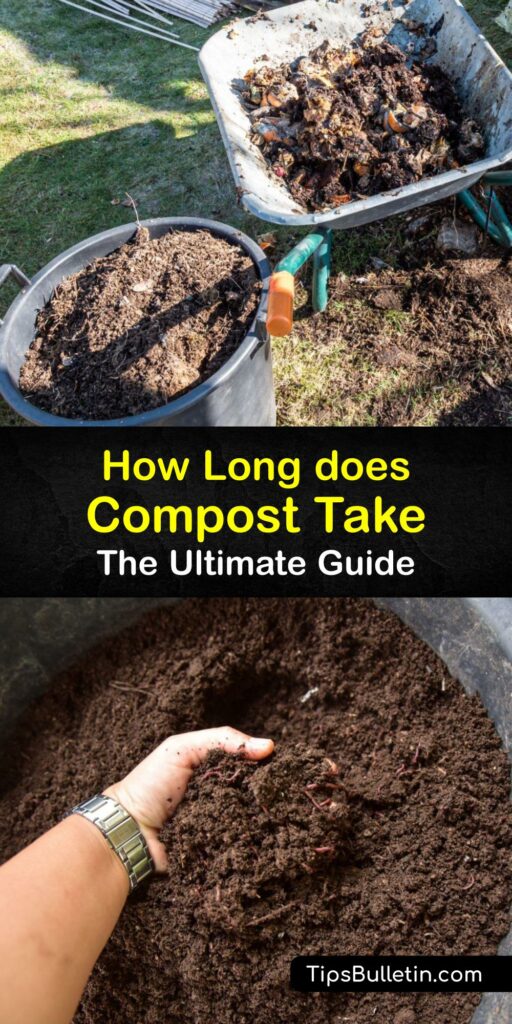First-time composters have a lot of questions. When is compost ready, how long does it take, and what does it look like when it’s finished? Learn how to give your food waste a second life as rich organic compost with our in-depth guide. Discover how to make a compost heap, get tips for compostable materials, and find out how to achieve a perfect nitrogen ratio.
Food waste accounts for roughly 25% of the total garbage in America. Only about 6% of food waste gets composted in America, but many eco-conscious citizens take it upon themselves to raise the compost rates in their communities. Even if you live in an apartment community, city-run composting programs accept kitchen waste.
However, if you have space for compost and are interested in learning the dos and don’ts of a healthy, balanced compost heap, this article is for you. We’ll help you discover the benefits of composting with compost tumbler tips for gardening newbies and easy-to-follow instructions. Get your kitchen scraps, and get ready to learn everything you need to make successful compost.

How Long Does Compost Take to Form?
How long does compost take, and what does finished compost look like? Explore the most critical compost-related questions and find the information to start composting at home to create a fertilizer and reduce food waste.
Discover how green and brown materials work together with air and moisture to make the perfect conditions for compost to form. Learn about compost maturity and how to start a heap from scratch in this in-depth guide.
What is Composting Exactly?
Composting is a sustainable way to recycle food waste and other organic material into a valuable soil amendment. Finished compost is used everywhere, from the humble home garden to large-scale agriculture projects. Compost is especially popular in organic farming, where synthetic fertilizers aren’t permitted.
Healthy compost improves soil structure, prevents nutrient depletion, and encourages beneficial microbes to stay active under the soil’s surface.

Compost is usually made from decomposed plant matter that has been allowed to reach scorching temperatures for prolonged periods. The heat kills pathogens and allows mature compost to be cycled back into the garden.
Who Should Use Compost?
Composing is for anyone looking to lessen their environmental impact by keeping food waste out of landfills. Recycling kitchen waste reduces methane emissions and greenhouse gasses by returning nutrients to the soil through a natural decomposition process.
If you have an abundance of food scraps or garden waste, consider starting your own compost pile or participating in your local composting program. Composted organic matter gives your soil better aggregation and water storage while stimulating the activity of helpful soil microorganisms.
The composting process isn’t as complicated as it appears. Once you establish a homemade compost system, you can apply it to just about anything: fruit trees, rose bushes, vegetables, shrubs, potted plants, and more. We have a great tutorial to get you started.
How to Start a Hot Compost Pile
Hot composting with yard waste or scraps from the kitchen compost bin helps you and the environment. While there are many ways to compost, such as cold composting and vermicomposting, hot composting offers versatility and is great for beginners.
Starting a homemade hot compost pile is pretty straightforward and only requires a little space and some suitable organic waste. However, to thrive, your compost pile needs four things: air, moisture, browns, and greens.
The carbon to nitrogen ratio helps determine whether to label material green or brown. Brown material contains high carbon levels, and green material is high in nitrogen. Green material may consist of items like grass clippings and vegetable scraps. Popular brown material includes sawdust, shredded paper, and dry leaves.
Choose a 3-foot by 3-foot space for your compost pile, or get a compost tumbler if you prefer a cleaner look. Layer your brown material, then greens, then a little water to add moisture, and continue until you’re out of materials.
Avoid meat and dairy products because small compost piles can’t properly destroy pathogens in these items. They make your compost smell and attract wildlife to your yard. When is compost ready? We’ll talk about that next.
When is Compost Ready?
How long does compost take? It depends on the composting method you use. There are a few different composting methods, such as making your own compost booster, which all yield usable compost on different timelines.
For example, cold composting means you leave a pile of organic waste alone and allow nature to work its magic. While there are no ratios to or proper aeration to worry about, the cold compost process is slow and takes one to two years.
Depending on environmental conditions and proper management, hot composting takes one to 12 months to complete. A compost thermometer is essential for hot compost enthusiasts. Once your compost reaches temperatures between 130 to 150 degrees Fahrenheit, let it sit for a week before turning.
The heat in compost is generated from the microorganisms eating the carbon. They release energy, warm the compost, and stimulate the natural decomposition process. The heat eliminates weed seeds and pathogens and allows ready compost to be safely cycled back into the garden. Next, find out how to tell when compost is ready and what it looks like.
What Does Finished Compost Look Like?
Finished compost is the culmination of weeks, or sometimes months, of measuring, mixing, and watering. What does finished compost look like? Finished compost, or black gold as the farmers call it, has decomposed into a state where it’s now usable as a soil amendment for other plants.
A simple sniff test tells you if your organic matter has broken down enough to become compost. When your compost is ready, it should smell sweet and earthy. You want a fluffy, chocolate cake-like texture that lightly crumbles between your fingertips.
Immature compost or unfinished compost has a rotting smell. It doesn’t smell like dirt, and the texture isn’t what you’d expect when rubbing it between your fingers; it might be slimy or clay-like. Give your compost more time to break down, and be sure your brown and green material ratios are spot on.
How to Use Finished Compost
Compost is the workhorse behind healthy soil and vigorous plant growth. While compost is generally low in nutrients, it provides benefits beyond nutrition. A seasonal application of fresh compost to garden soil stimulates helpful microbes, draws beneficial garden worms, and encourages better water retention and soil structure.
Once you confirm your compost is ready, it’s time to put it to good use. There isn’t any plant or garden space that doesn’t benefit from compost. This fluffy, rich, and sweet-smelling soil amendment works everywhere.
Mix finished compost into the first two or three inches of topsoil in your garden bed and spread it evenly before planting. Add compost to dormant beds in the fall or as a kickstart in the early spring. Never put plants in compost alone; it doesn’t hold enough nutrients to support life.
When is compost ready? Of course, it depends on various factors, such as the composting method, the materials, and the environment. A well-balanced hot compost heap may yield usable compost in as little as four weeks. A vermiculture setup produces compost in six months, and the no-hassle cold composting method takes up to two years.
Choose the composting method that works for you based on available space and the amount of green and brown material you generate. Home composters often find it challenging to generate enough brown materials to keep up with greens like grass clippings and vegetable waste. Be sure to factor that in when planning your compost system.
If you’re keen to compost your kitchen waste but don’t have the space, freeze your scraps in a plastic bag and deliver them to your community compost program. Or, give them to other home gardeners to make DIY compost tea. There’s a whole composting world out there to explore. We hope our guide has inspired you to get started.

When is compost ready? If you loved learning all the dos and don’ts of home composting, share this article with friends on Pinterest or Facebook who want to know more about composting.